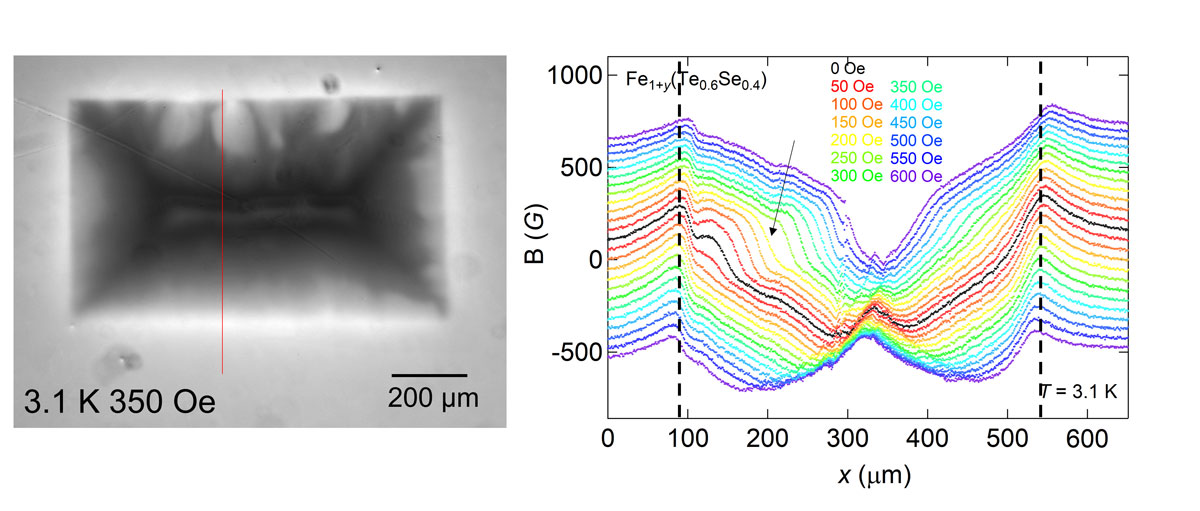PC1-2
Turbulent Structures and Characterizations of “11-type” Iron-based Superconductors by Magneto-optical Imaging
Nov. 29 10:15-10:30
*Tong REN1, Sunseng PYON1, Tsuyoshi Tamegai1
Department of Applied Physics, The University of Tokyo 1
In our preceding study, a turbulent vortex structure at the remagnetization boundary of a superconductor, called the Meissner hole, was reported in a single crystalline '122-type' iron-based superconductor (IBS) (Ba0.67Rb0.33)Fe2As2 [1]. The Meissner hole was observed in a pristine crystal and the one with artificial defects, accompanied by an excess local current at the remagnetization boundary.
The Meissner hole, we trust, should be a ubiquitous vortex phenomenon that is not bound to one or few dedicated types of superconductors. Recently we observed Meissner hole-like vortex behavior (see attached figure) in the '11-type' IBS Fe(Te0.6Se0.4). This material is currently under intense investigation for its potential to realize a topological non-trivial surface state, where the Majorana Fermion is assumed to be hosted. Taking this opportunity, we decide to extend the same magneto-optical observation to its parent material, FeSe. Unlike other iron-pnictide parent compounds like LaFeAsO or BaFe2As2, FeSe undergoes a structural transition at ~90 K without being accompanied by antiferromagnetism. The magnetic transition, however, is seemingly cooperative with its superconductivity since it emerges along with the superconducting transition temperature under pressures [2]. More knowledge of this mysterious phase transition requires the resolution of the vortex state below Tc (~8K), which is easily covered by our low-temperature limit for observation (3 K).
[1] T. Ren, S. Pyon, and T. Tamegai, J. Phys. Conf. Ser. 1975, 012013 (2021).
[2] T. Terashima et al., J. Phys. Soc. Jpn. 84, 063701 (2015).
Keywords: Vortex, Magneto-optical imaging, Meissner hole
